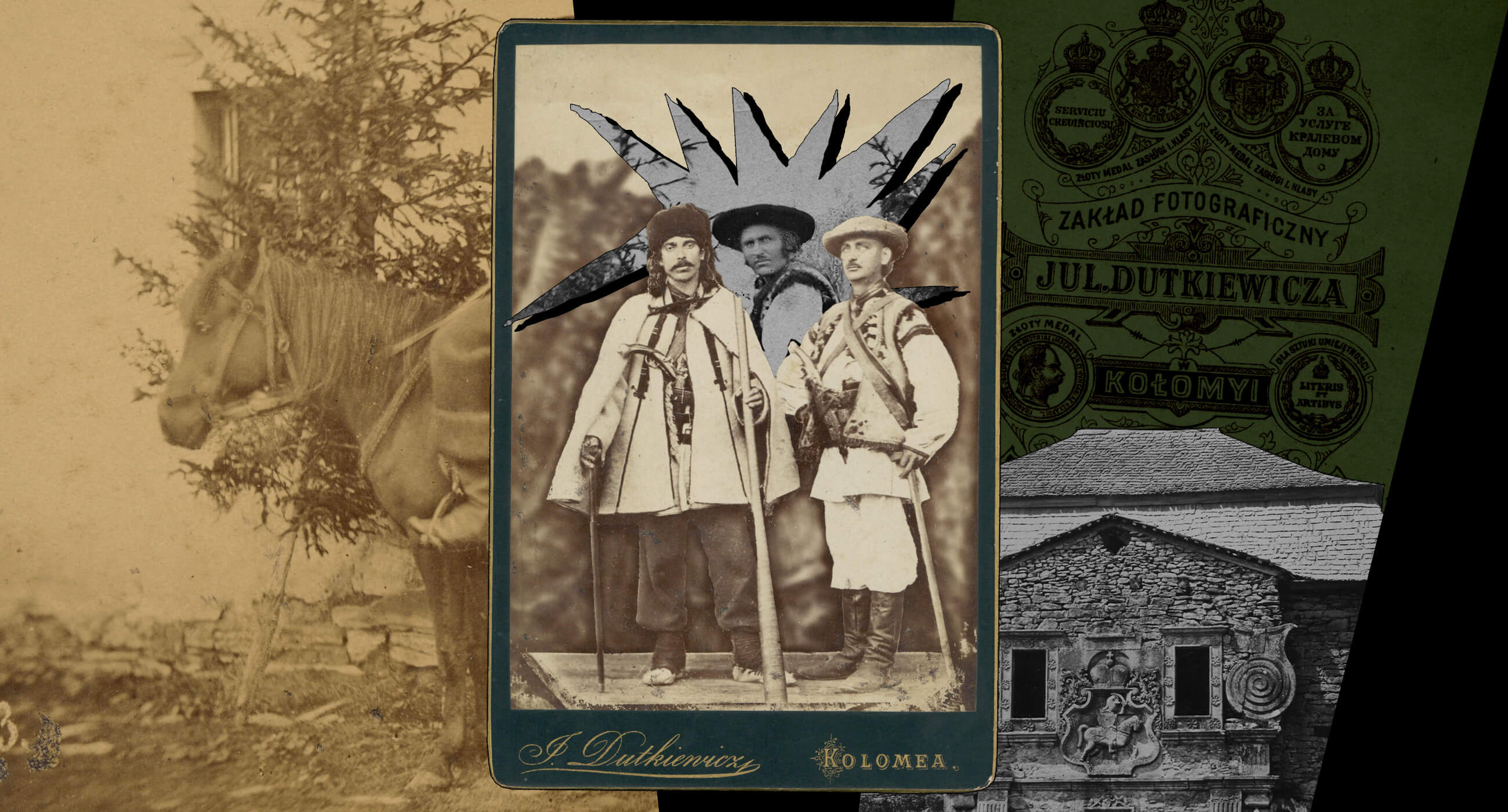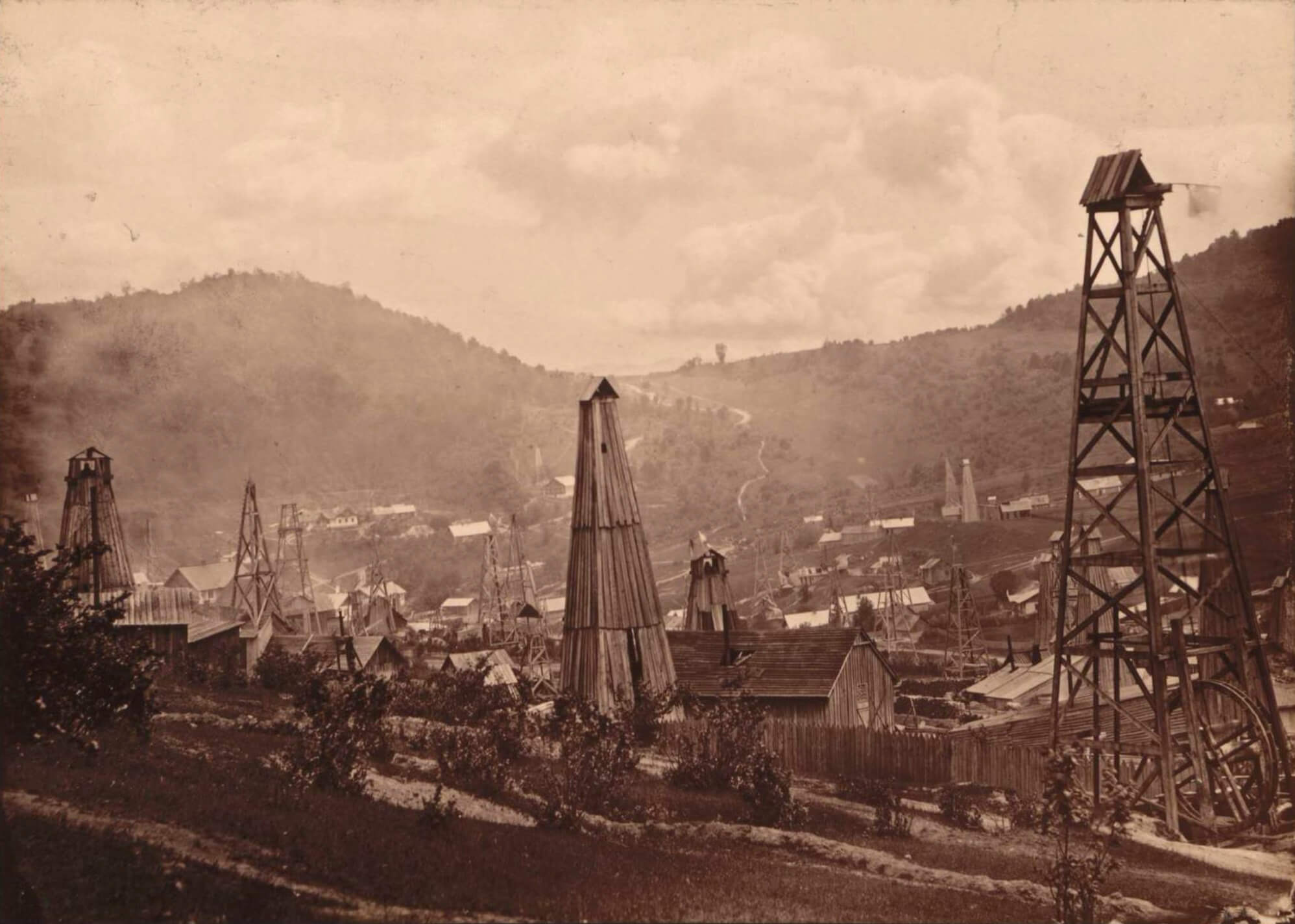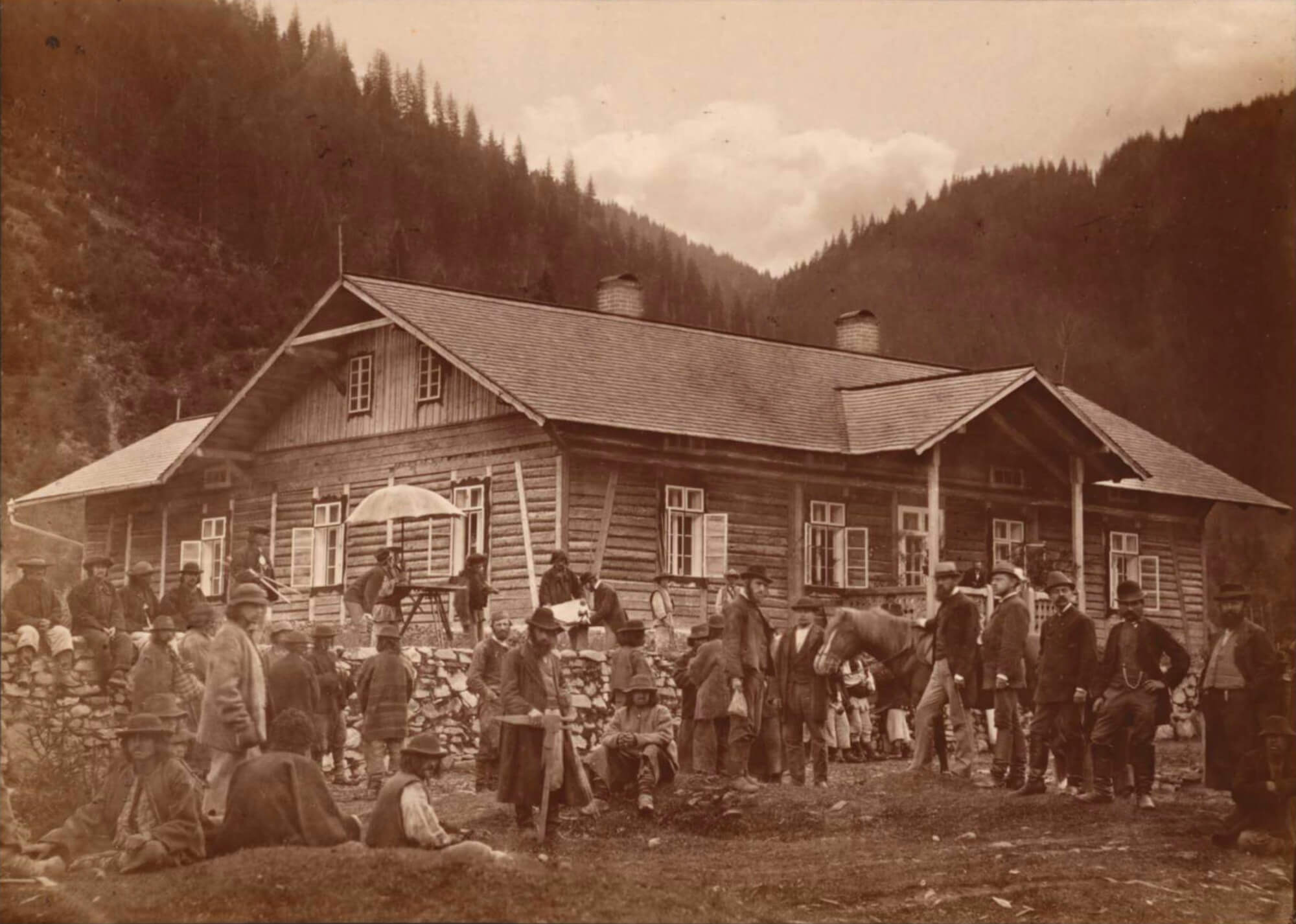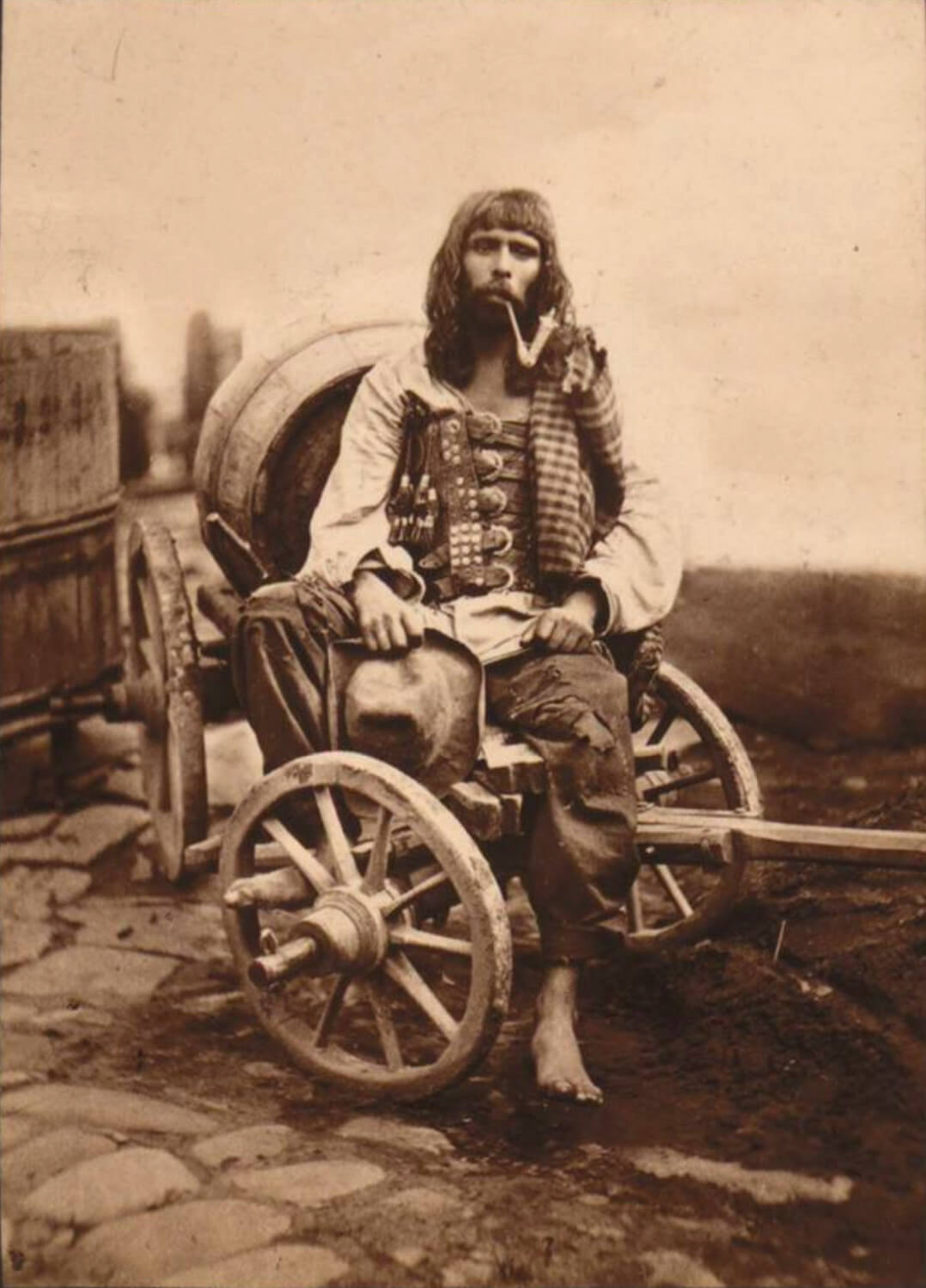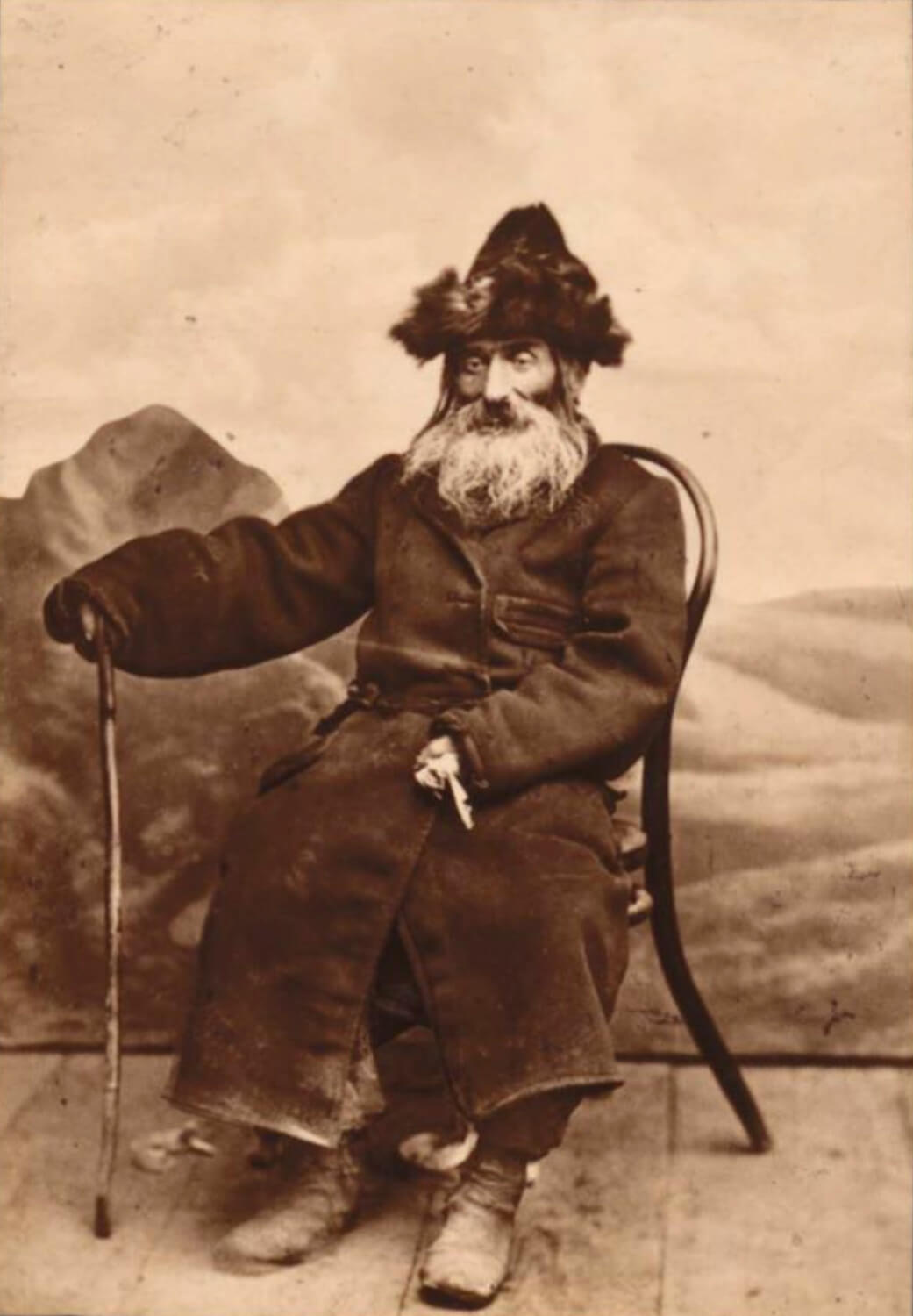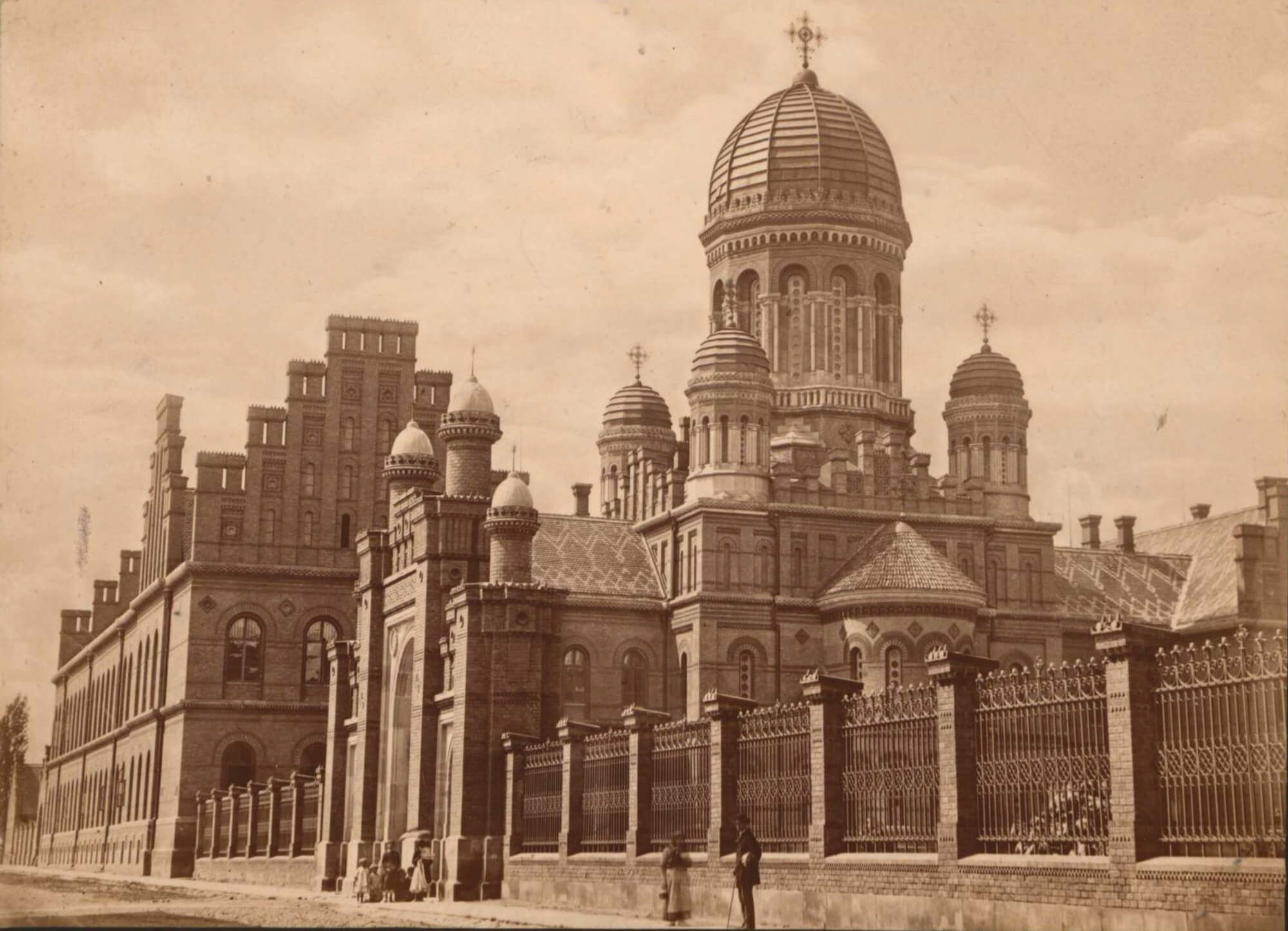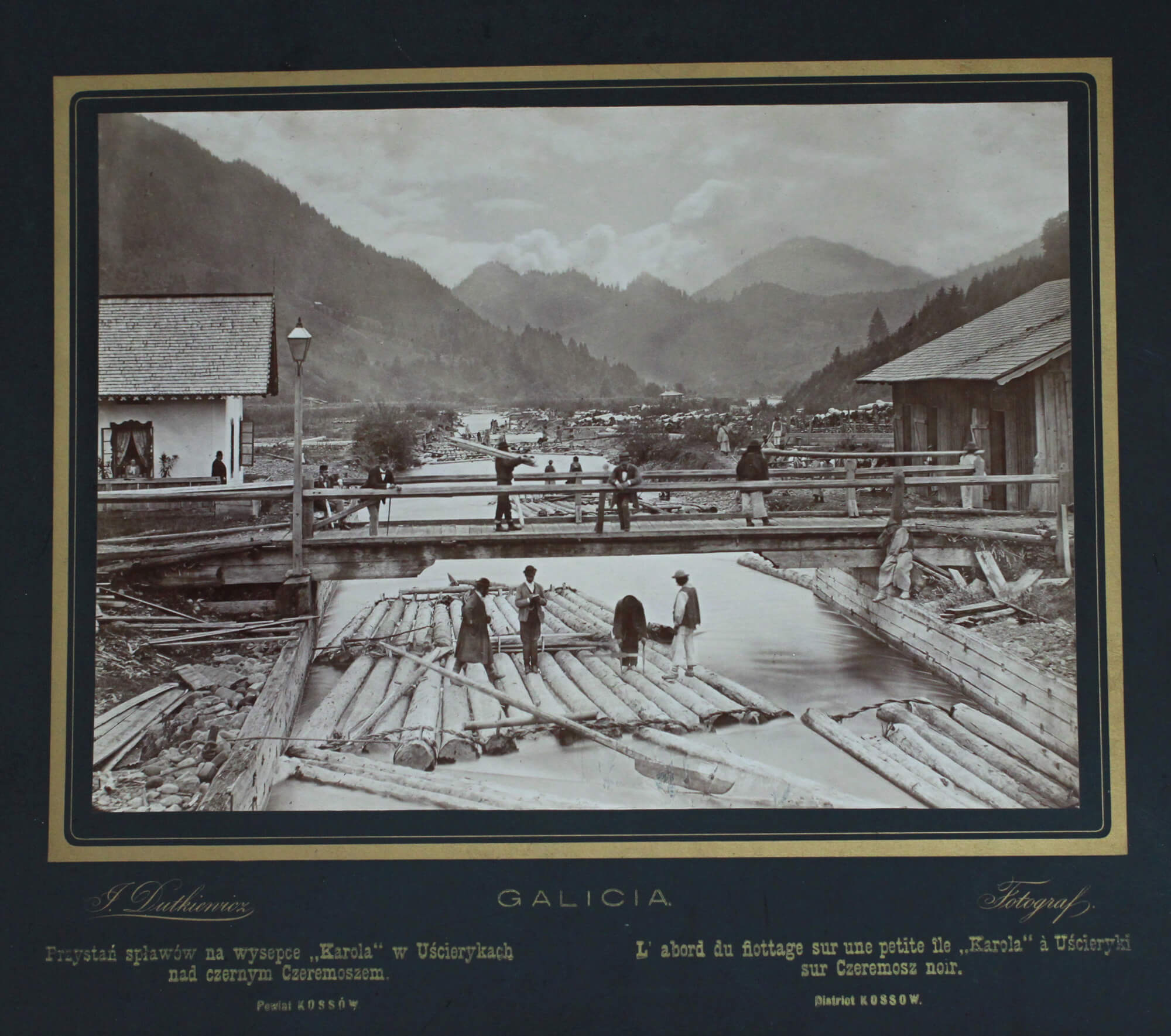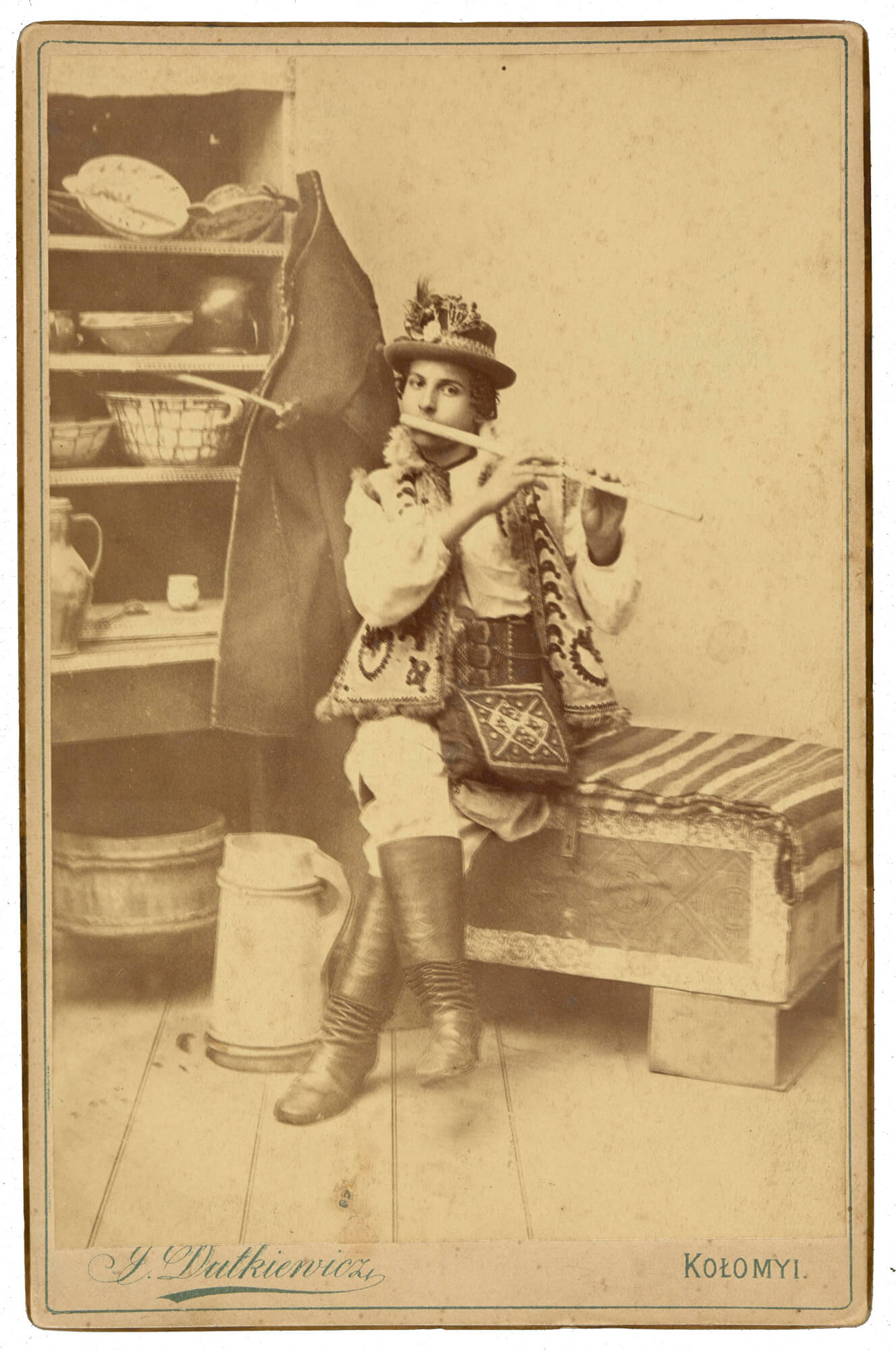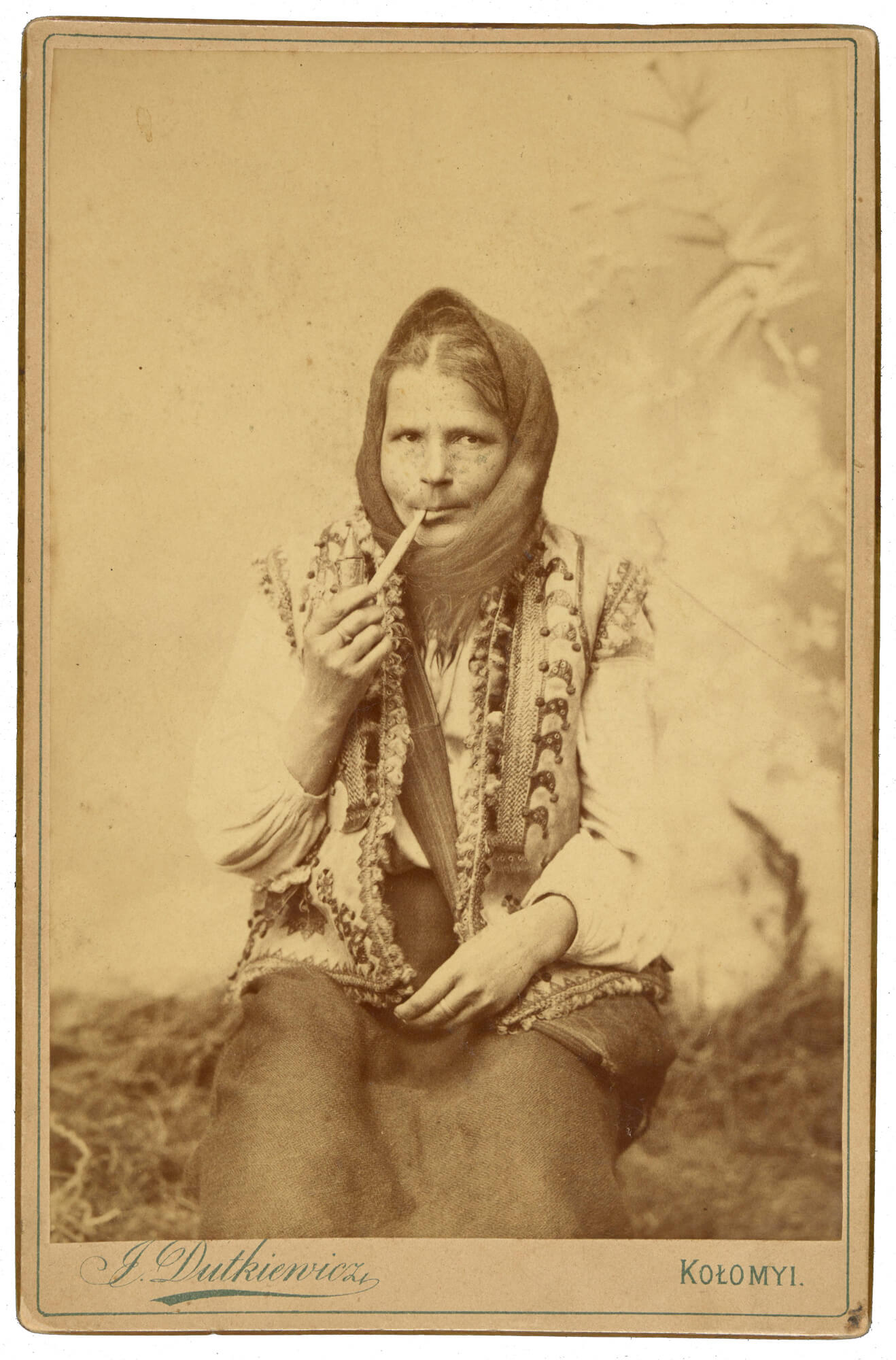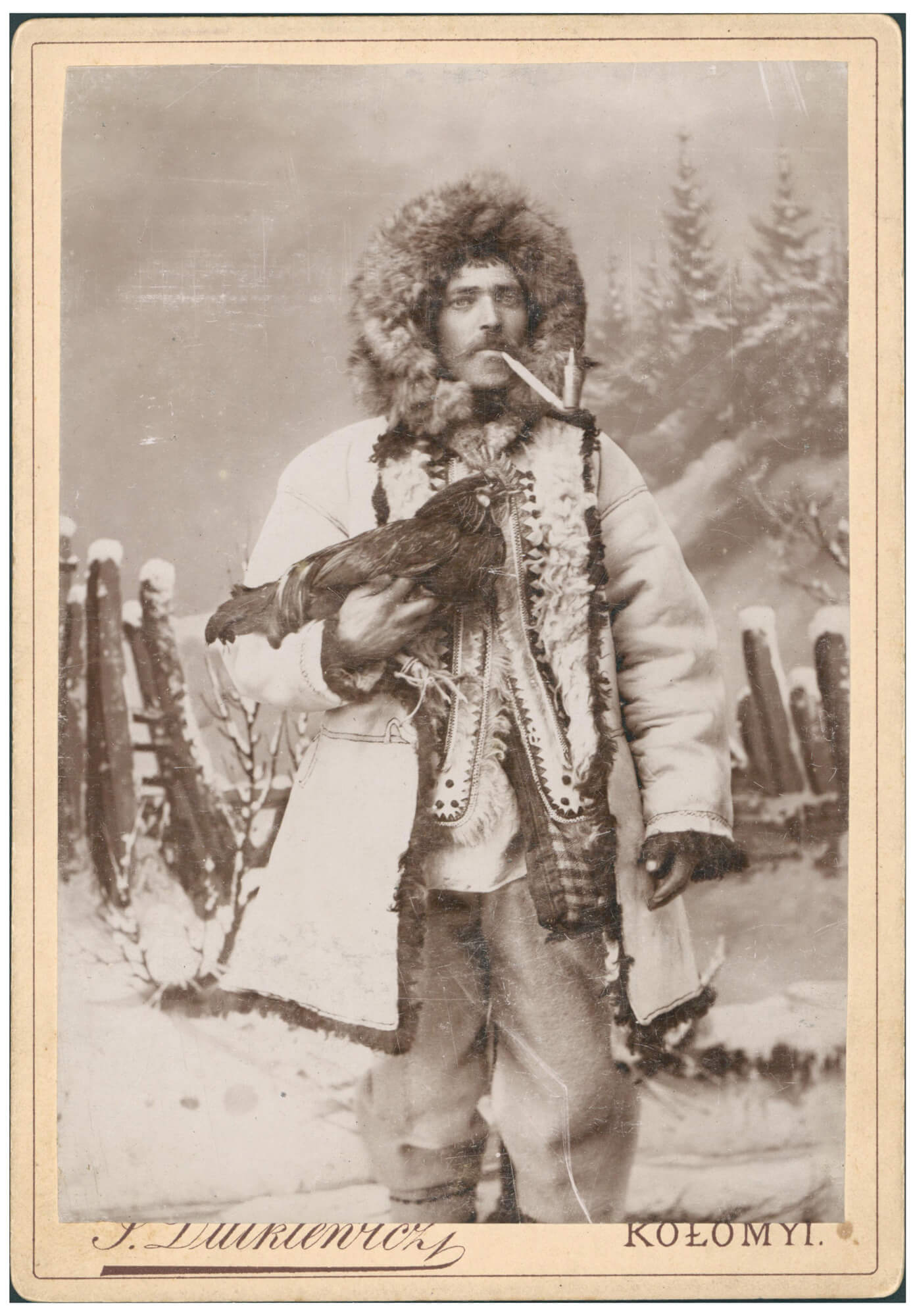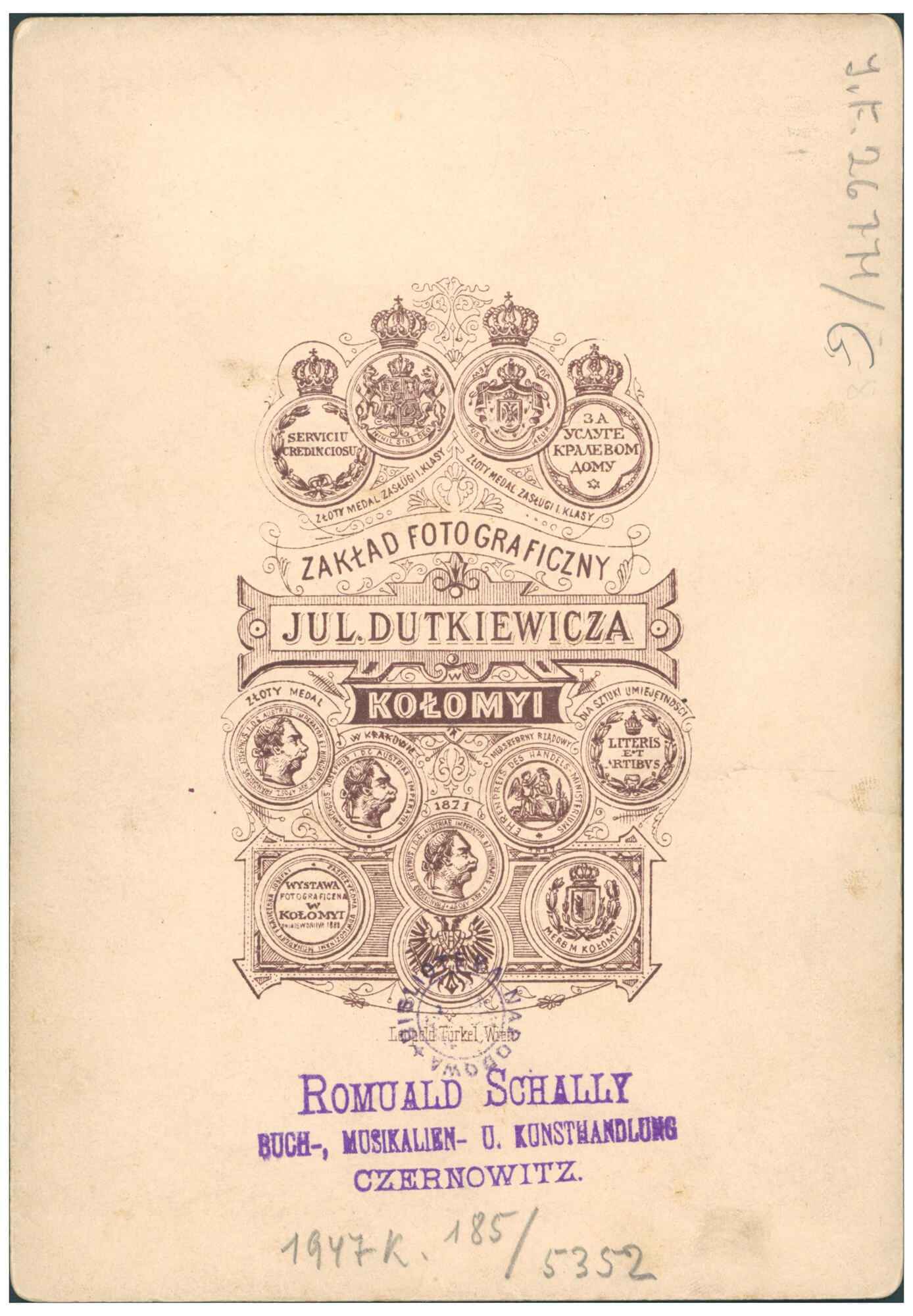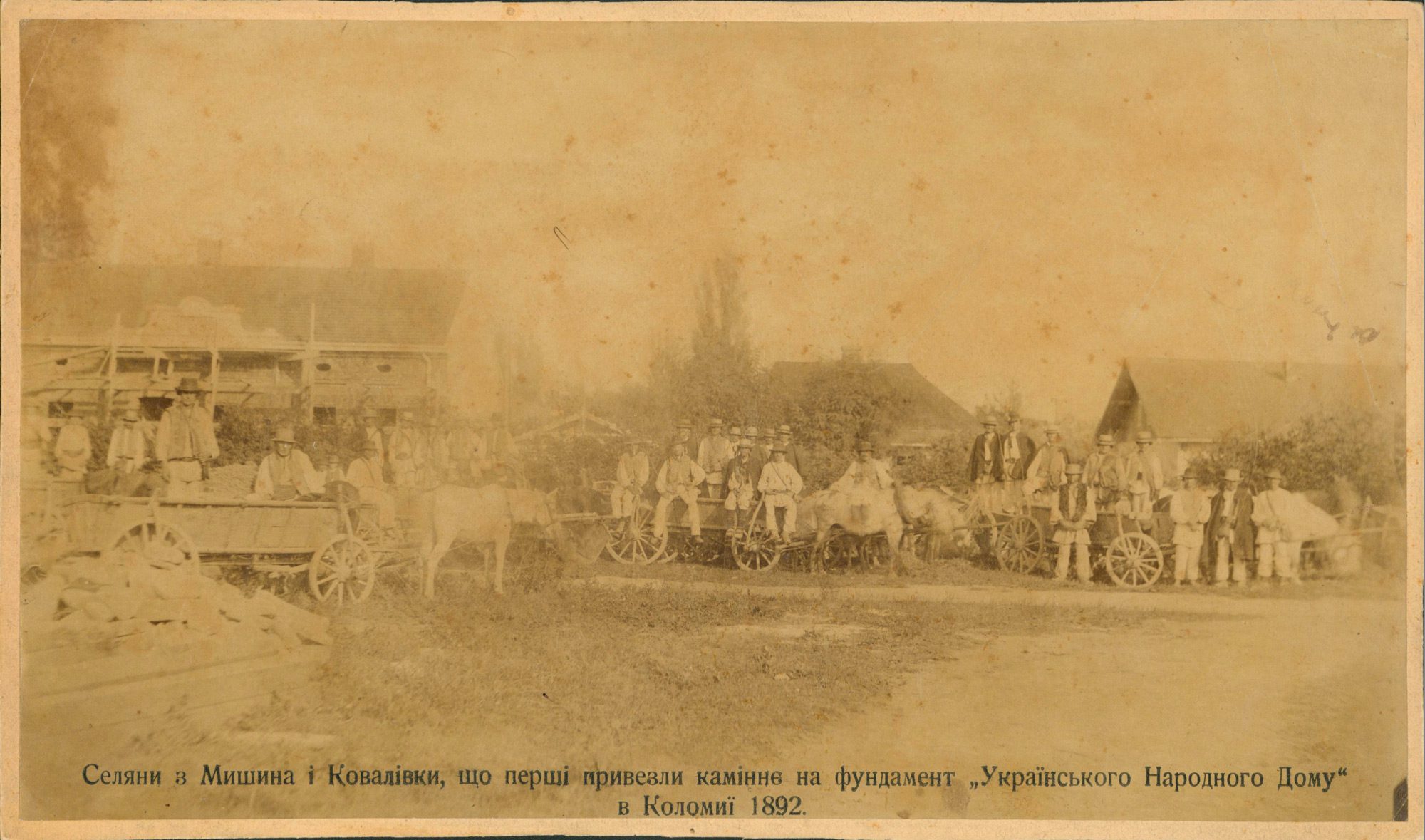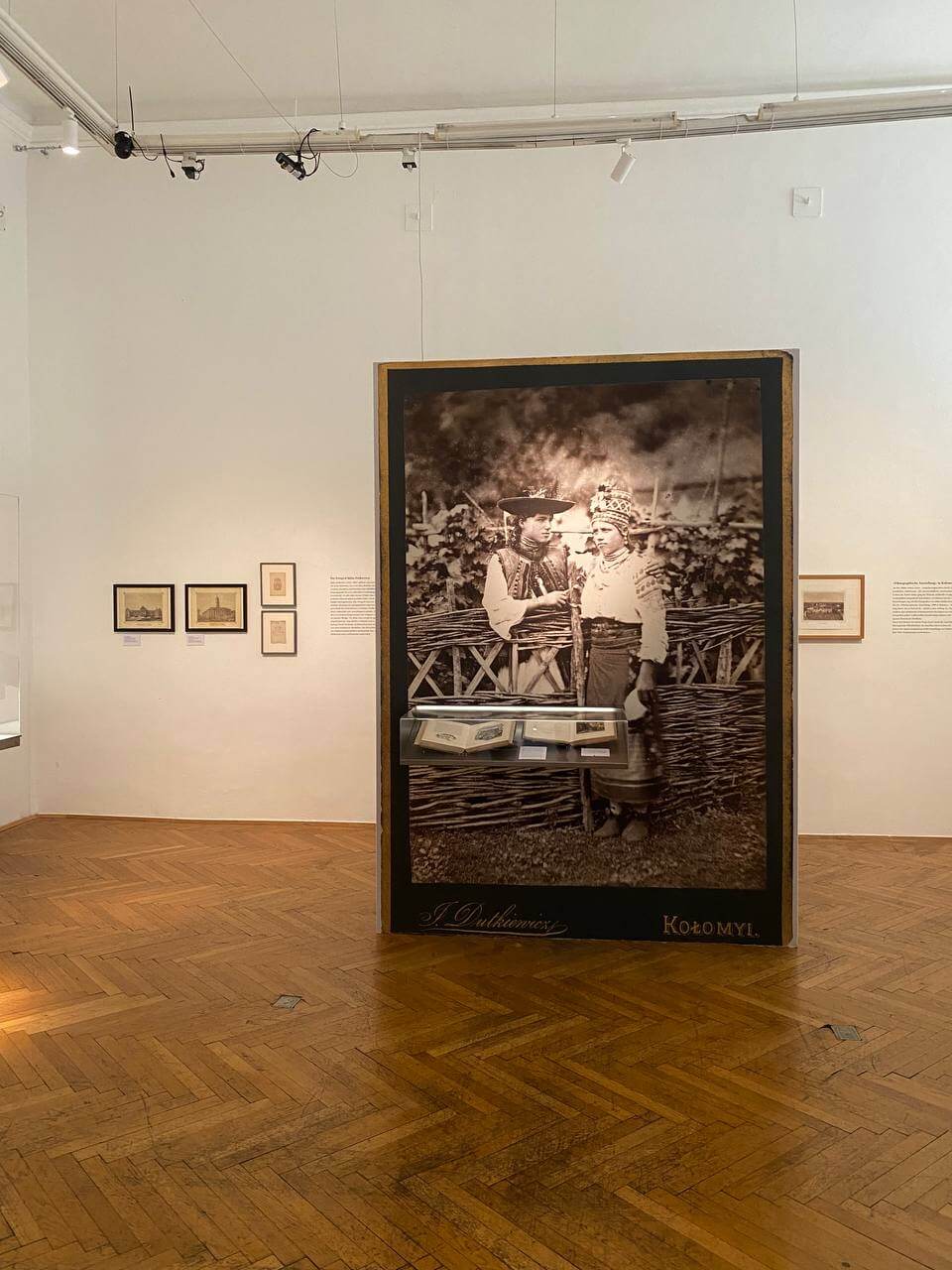In 2024, Ukraine will celebrate the 190th anniversary of the outstanding chronicler of Carpathian Galicia, Juliusz Dutkiewicz (1834-1908).
For the last 25 years of his life, he lived in Kolomyia, where he created photographic masterpieces at the European level and glorified his region throughout the Austro-Hungarian Empire, which included Galicia. Suffice it to say that in the summer of 1880, the city hosted a grand Ethnographic Exhibition, where the monarch of Austria-Hungary, Emperor Franz Joseph I, admired the folk types and photographs of the Eastern Carpathians.
Mykhailo Chernichkin visited Kolomyia and told about the pioneer of Galician photography and his legacy specially for Zaborona.
The photographer of Galicia and Bukovyna
For many decades of the nineteenth century, Juliusz Dutkiewicz reached a wide audience through the press as well as European scientific, historical, and ethnographic publications.
However, none of the currently known masters of Galician photography of the second half of the nineteenth century, or even all of them taken together, can be compared to Juliusz Dutkiewicz from Kolomyia, whose photographs have largely shaped the image of Galicia, Pokuttia, and Bukovyna. Unknown to the public, his work attracted the attention of art historians only in the early 2000s. As a result, Europeans and Canadians were able to get acquainted with Dutkiewicz’s works at photo exhibitions in Krakow, Warsaw, and Toronto. In 2023-2024, fans of the history of photography saw the Ukrainian’s solo exhibition at the Volkskunde Museum Wien.
There is still no accurate biographical information about Dutkiewicz’s life. A mysterious gloom hides both the time of his birth and death. Only the great creative heritage (photographs, albums, and postcards) of the photographer allows us to realize and truthfully describe the events of his life and places where he worked; to understand the stages of his artistic search.

Landscape with oil towers in the village of Sloboda. Photo by Juliusz Dutkiewicz. Source: Museum of Applied Arts in Vienna

The village of Yablunytsia above the White Cheremosh. Photo by Juliusz Dutkiewicz. Source: Museum of Applied Arts in Vienna

A Hutsul from Kosovo. Photo by Juliusz Dutkiewicz. Source: Museum of Applied Arts in Vienna 
A Jewish man from Galicia. Photo by Juliusz Dutkiewicz. Source: Museum of Applied Arts in Vienna

The residence of the archbishops in Chernivtsi. Photo by Juliusz Dutkiewicz. Source: Museum of Applied Arts in Vienna
Juliusz Dutkiewicz: Family History
Researchers from Ukraine and Canada are constantly researching new facts about Juliusz Dutkiewicz, offering their own versions of his biography. The latest thorough work belongs to a researcher from Canada, Ksenia Kebuzynska, who found an album with Dutkiewicz’s works in the library at the University of Toronto. Her findings also reveal the story of the photographer’s family.
Juliusz was born in Budapest in 1834. At that time, his father, a Ruthenian from Nadvirna, served in the Austrian army as an artilleryman. Upon finishing his service, he returned home and later settled in Stanislaviv (now Ivano-Frankivsk), where he opened a bookbinding workshop. In 1848-1849, during the “Spring of Nations,” Dutkiewicz’s father rejoined the army and defended the city from Polish insurgents. He was awarded and transferred to Chernivtsi to a higher position.
It is known that his son Juliusz got married in Chernivtsi. The couple seems to have begun their independent life in the small Bukovynian town of Suceava (now part of Romania). His first wife was significantly older than Dutkiewicz, working as a modiste, sewing fashionable clothes for clients.
Juliusz, who had been interested in his father’s business of creating books and albums since childhood, opened a bookbinding workshop in Suceava. In his advertisements of the time, he invited the community to order photographic portraits. After his wife’s death, Dutkiewicz moved to Stanislaviv, where he continued to practice photography until 1874. In 1875-1876 he tried to establish his photography business in Lviv. The attempt was unsuccessful, and in 1877 Juliusz settled in Kolomyia, where he spent 25 years of tireless work in a photo studio.

A pier for timber rafting on the island of Karol in the village of Usteriki on the Black Cheremosh. From Juliusz Dutkiewicz’s photo album “Galicia,” displayed at the Museum of Ethnography and Arts and Crafts in Lviv. Photo: Mykhailo Chernichkin
The first photographer of Kolomyia
Today, 150 years later, there are almost no traces of the first photographer of Kolomyia in the city. Only two museums, the Museum of Folk Art and the Museum of City History, have about two dozen of his photographs.
Among the photographer’s preserved heritage, presented by the National Museum of Folk Art of Hutsulshchyna and Pokuttia, there is one truly priceless photograph. It was printed on albumin paper, cabinet-sized, thin, and delicate. Someone confidently marked the year of its creation — 1872 — twice in blue ink on the front side, and wrote the name “Hutsul” on the back. The museum staff preserved this ancient artifact of Dutkiewicz’s 150-year-old studio for posterity. It’s safe to say that one of Juliusz Dutkiewicz’s most famous works, sometimes called “The Gypsy Water Carrier from Kosovo,” was first published in 1872 when he was working fruitfully in Stanislaviv.

A portrait of a Hutsul playing a flute. Photo: Juliusz Dutkiewicz. Source: National Library of Poland 
Portrait of a Hutsul woman with a pipe. Photo: Juliusz Dutkiewicz. Source: National Library of Poland

A Hutsul with a pipe and a chicken. Photo: Juliusz Dutkiewicz. Source: National Library of Poland 
The back of a photo with the emblem of Juliusz Dutkiewicz’s photo studio in Kolomyia. Source: National Library of Poland
My trip to Kolomyia was motivated by the hope of seeing another photograph by Dutkiewicz, which is important not only for the history of photography but also for the history of Ukraine.
This is a large-format group photo of peasants from nearby towns who brought firas full of stones to start construction of the Rus’ People’s House in Kolomyia. The same house now houses the Y. Kobrynsky National Museum of Hutsulshchyna and Pokuttia Folk Art. Father Josaphat Kobrynsky, rector of the Greek Catholic Church in the village of Myshyn, historian, public figure, and writer, spent the last 20 years of his life implementing the idea of building a People’s House in Kolomyia, a cultural and educational center for the Ukrainian community. In the spring of 1892, Kobrynsky invited Juliusz Dutkiewicz to photograph the beginning of construction to draw more public attention to the project. The entire Kolomyia district raised funds to buy a plot of land, commission the design and construction. It took ten years to erect the three-story building in the center of Kolomyia. The House opened its doors in 1902 when the chief builder from Myshyn had already passed away…
Here is how the Kolomyia newspaper “Russian Council” #104 of 1892 described the history of this photo: “When all the firas arrived at the construction site and unloaded the stone they had brought, then everything was in order, and the honorable Mr. Juliusz Dutkiewicz, the local photographer, took a picture of all those arrived… We only regret that the honorable citizens of Ispas were a little late, when the photographic apparatus was taken home, and it was not possible to trouble Mr. Dutkiewicz for a second time, as he offered his work and expenses for the eternal memorial. That image will be placed in the room of the future temple of nations…”

Peasants from Myshyn and Kovalivka, who were the first to bring stones to the foundation of the Ukrainian People’s House in Kolomyia, 1892. Photo by Juliusz Dutkiewicz courtesy of The National Museum of Hutsulshchyna & Pokuttya Folk Art named after Yosaphat Kobrynsky
A ranch house on Panska Street in Kolomyia
The third photograph by Dutkiewicz, forever imprinted in my mind, constantly reminded me of one thing: “The place of the meeting cannot be changed. That’s Panska Street in Kolomyia!”
In 1878, on the outskirts of the city, where only poor Jews lived, Juliusz Dutkiewicz rented a large wooden warehouse for a photography studio. He immediately placed an advertisement in the newspaper and probably took a promotional photo of his establishment in the style of the American Wild West. An enchanting promo for the studio and an enchanting photo indeed. The historic ranch building at 2 Panska Street survived two world wars but was destroyed by the Soviet authorities in the 1950s. When the road from the center to the train station was being widened, this place was covered with asphalt, and now the numbers of the houses on the modern Franko Street start with four.
You can see what Zaklad fotograficzny J. Dutkiewicza looked like 152 years ago in Dutkiewicz’s original print at the photo exhibition “Unknown Photographer J. Dutkiewicz,” which has been open since August 6, 2024, at the Museum of Hutsulshchyna and Pokuttya. The master’s photographs are exhibited in Kolomyia for the third time. The first one was at the Photographic Exhibition of 1871, where Dutkiewicz received his first professional award, and the second time was at the triumphant Ethnographic Exhibition of 1880, where he was also awarded with a medal. I am looking forward to this year’s event, as it will be my real meeting on Panska Street.

Exhibition “Oil Fever and the Cult of the Hutsul. Photographic Artifacts from Galicia and Bukovyna” with photographs by Juliusz Dutkiewicz at the Vienna Museum of Folk Art. Photo: Mariya Ivanova

